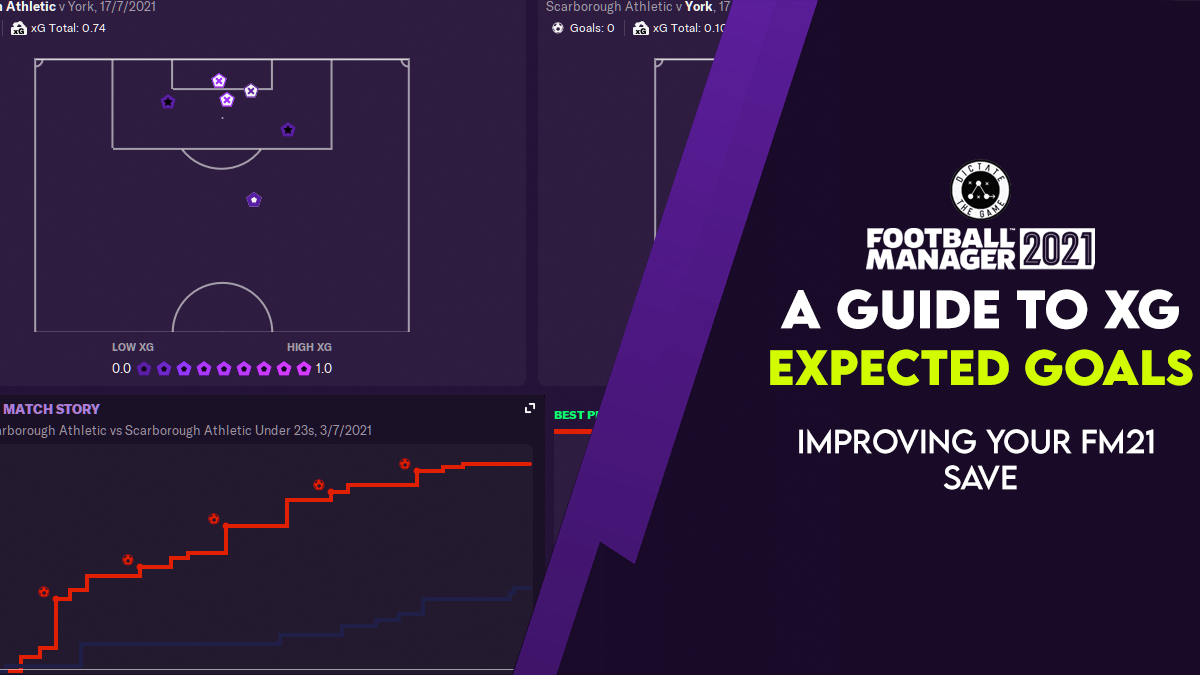
A guide to xG in FM21
xG in FM21 was the feature many of us nerds were waiting for. Here at DTG we’ve been messing around with manually adding stats like xG, xG against, xA and even received pass position since FM19. You can imagine our joy when we realised that with xG in FM21 we wouldn’t have to do this by hand anymore. After all it is an increasingly important statistic used by football clubs across the globe to improve their tactics and inform their player recruitment. Premiership hopefuls like Brentford for example have had great, moneyball-esque, success driven by the use of xG. With this new statistic in the game there’s no reason why you can’t use it to maximise your own FM21 success.
What is xG?
As mentioned above I’ve been a fan of this since FM19. I even made a spreadsheet to calculate your xG based on shot position for FM20. I’ve explained what xG is a few times so rather than paraphrase myself again, here’s the original:
xG or expected goals is basically a measure of chance quality. This is a very brief and clumsy explanation but every chance in a match can be given a value representing how likely a shot from that position or situation is to result in a goal. This is normally a value between 0 and 1, with 0 obviously being no chance and 1 being a 100% chance, or 0 being no goal expected and 1 being a certain goal. A shot from a position with a .1 value would suggest a 10% chance of goal from that position.
There are lots of different models of xG that take into account different factors when considering how likely a shot is to result in a goal. The most commonly considered factors are the position of the shot and the angle, though some models consider the type of pass leading to the shot and the number of defenders between the attacker and the goal.
Once you have an idea of how likely certain shots are to go in you can use this baseline to determine the goals a team might expect to score. Over the course of the match all the values can be totalled give a number of expected goals for the that match. The higher number the more chances, or the better the quality of the chances.
How does xG in FM21 work?
In this year’s version of xG the model has been put together by SCISPORT. From the feature teasers it’s been made clear that this model includes not just position, but angle, defender position or pressure, and keeper position. There may well be more but it’s doubtful we will be told all the elements of the xG model SCISPORTS use. Especially as they offer their services to real world clubs. Analytic companies make their bread and butter off their honed data models so we’re not likely to get all the details. One thing I’d really like to know (and could be the source of any discrepancies we find between xG values in the game and goals scored) is whether the base rates used for how likely a shot is to go in, the xG value, is based on real world data or baseline data from FM21’s engine.

Regardless it looks like a reasonably detailed approach that stands up well to a few of the different models out there. It is certainly more detailed and nuanced than the basic model I used. But where can we find it in FM21?
Match Stats
In the Match stats area of the in game tablet alongside goals, shots, fouls etc you also get a running tally of the xG from these chances. Whether they are covered in a highlight or not. It can take a little while to update sometimes but this gives you the closest to real time update as to how you are doing.
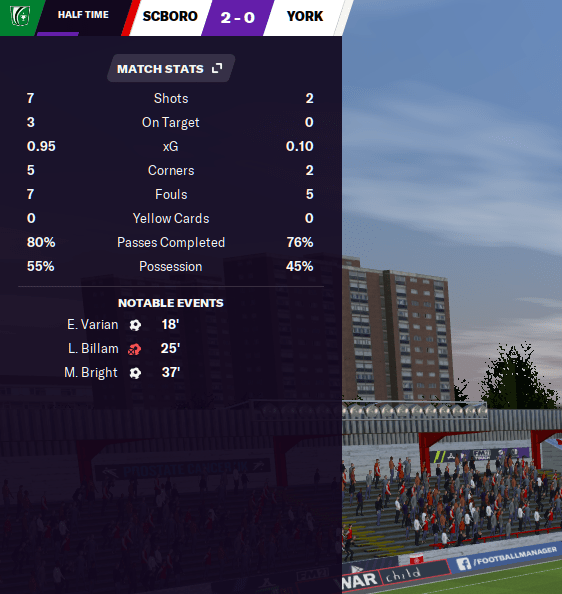
You can use it to stat check, or sense check, the quality of a chance you have just seen on a highlight. Was it actually as good as you though?
xG Match Story
This appears only at half time or at full time. It’s a representation of the attacking momentum on a game which basically allows you to see when xG was generated. Or when you had chances and how good they were. The bigger the ‘jump’ on the graph the better the chance, with every goal also being marked on there.

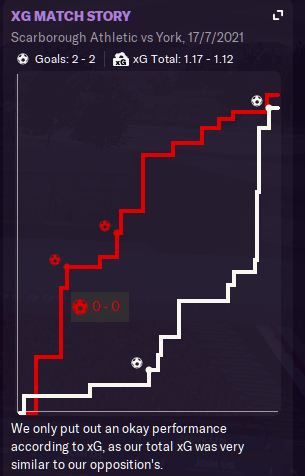
This allows you to see who was on top, for how long, when teams are having more success, and whether you were lucky to get that final goal or not.
xG Shot Map
Like the story the shot map only updates during the half time and full time period (unless you are lucky enough to get a brief individual player update in the dugout). This breaks down xG by shot location, and other information like whether it was saved or blocked, or a goal.
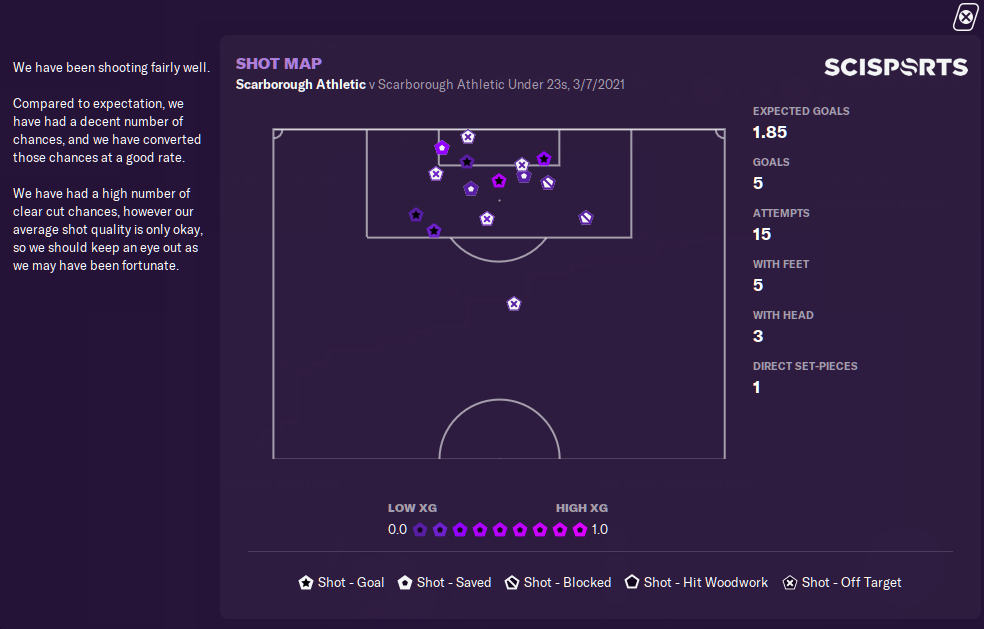
You can use this to work out where you have having more success, and if you hover over the chances how/with who.
Player Statistics
You can also get a break down by player of how much xG they have produced. Importantly you can get that broken down by how much xG per 90. In can be presented in the graph below or if bug reports are attended to it will also be available in squad views.
You can use this to judge and track player performance. But bear in mind it is rare in the real world at least for players to constantly outscore their xG. The exceptions to this tend to Messi and Ronaldo.
How to use xG in FM21
So we have xG in FM21 but what’s the point? You know how many you have scored, that’s what gets you the points and the silverware. Not how many the stats say you probably should have scored on average. And to an extent you would be right. It’s a descriptive statistic of a past event, in this case the quality of your chances, not a statistic that is strongly predictive of what chances you will get in the future.
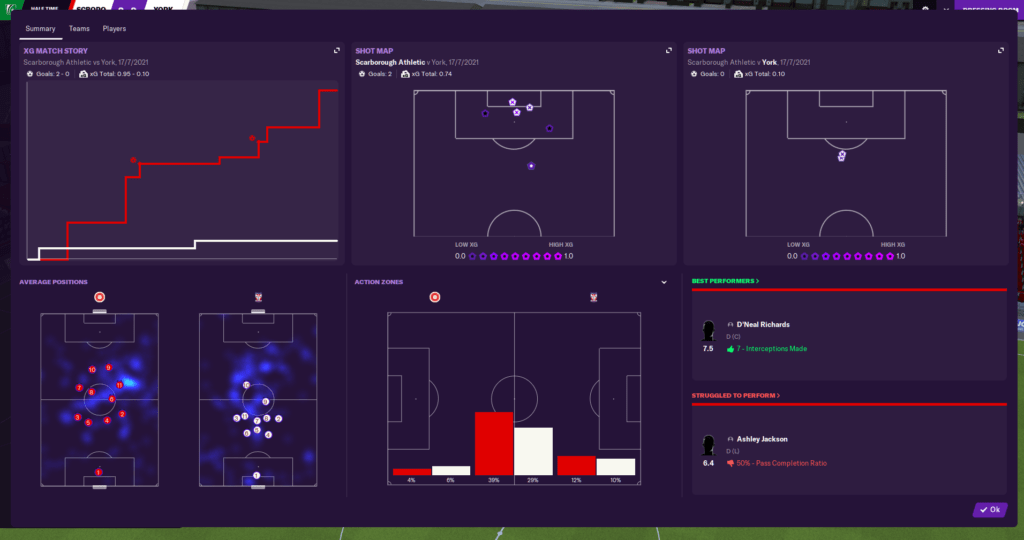
But in the real world it is used in a few different ways.
Using xG to assess tactics
We can use xG to assess whether a tactic is being productive enough going forwards, and to check what impact any changes to the tactic (and line up) have had. It’s fairly simple to do as well now we have xG worked out for us in FM21. You need a series of games using tactic one, you take the xG from each of these games so you can then work out what the average xG is for that tactic. Ideally you want a good range of games against weaker and stronger teams to get a complete picture. And the more games you have the more accurate the statistics will be.
Then you swap to your second tactic, and after a similar number of games, work out the average xG per game here as well. This gives you a nice simple comparison to see which tactic is producing more xG or a bigger a goal threat. For the nerds ideally what you also need alongside both averages is the standard deviation as well so you can see if any difference in averages is a big enough difference to really care about.
And this can be done for small changes to instructions and role, to large changes in structure and even player changes in the line up. For those of you in the lower leagues it is something really useful for getting those small marginal gains that can make the difference between survival and relegation.
Using xG to assess Keepers
Alongside our xG we also get the xG of the teams that have played against us. Just as we did in our article earlier in FM20, and during beta here, we can use what we know about how many goals we were expected to concede and how many we actually did. This will let you know whether your keeper is likely under or over performing. Something that can be hard to tell if you have a team that is extremely weak for example. How do you know whether you are conceding a lot because your team is terrible or because your keeper is terrible? With xG against you can make a much better judgement of this.
Using xG to assess Players
We can use the individual breakdown of xG for players to both assess how well they are doing for our team as well as if opposing players are a potential threat or not. This can help you work out with attackers to favour in your own line up but also which of the opposition players to keep an eye on and clatter with tackles.
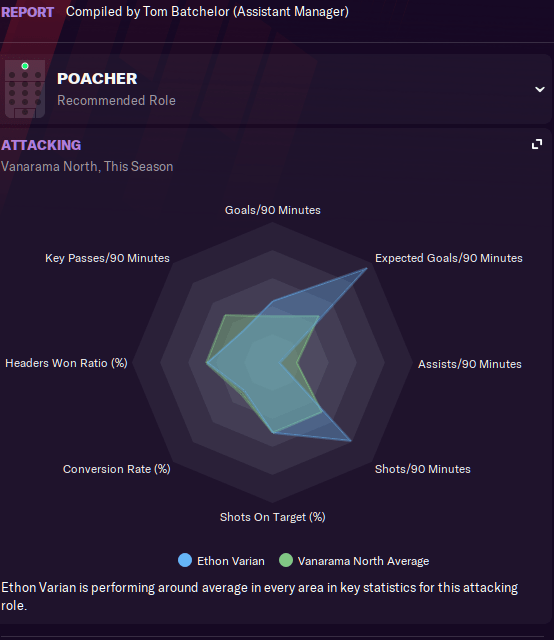
When considering the opposition it can be particularly useful for identifying threats that you might not have considered. For example are most chances falling to their strikers or do you need to watch out for their inverted wingers or box to box midfielders arriving late to tap in? This in turn means you can tailor your opposition instructions to take them out of the game.
It can help in the transfer marker as well. Whilst you have to be mindful of the level of football players have been exposed to high xG players might be potential diamonds in the rough that you can take to your own club and benefit from. In the real world Brentford have become very good at using information like xG to bring players in that are generally undervalued, but can then either improve their squad or be sold on for an extreme profit.
Related Stats: xA and Received Pass Position
Whilst xG might have found its way into the game we are still waiting on sister stats like expected assists (xA). These can be really useful for assesing creativity and are often calculated using a very similar approach to xG. As one in kind of related to the other. But if you want to get xA and similar stats into your game don’t worry. You don’t have to wait until FM22 or whenever it is added, if you follow our guide here you can work it out yourself.
xG in the FM21 Beta
As I write this we are still in the Beta period. And the beta period is for finding bugs. Hopefully you’re all doing your part and reporting anything you’ve found. There are some bugs associated with xG that I and others have reported on the forums that will hopefully be addressed. These include:
- Discrepancies in the calculation of xG during a match
- xG not appearing in the squad view/search for individual players
- Discrepancies between the xG Match Story xG and goals, and the Shot Map xG and Goals.
If you do notice anything. Please report it on the forums.
If you like this post please consider following us on twitter @DictateTheGame, and reading some of the latest posts below:
- One-Club Man: La Cantera
- One-Club Man: Defence-First Football & Club DNA In FM24
- One-Club Man: 1st Day on The Job, Meet The Team
- The Story of One-Club Man
- FM24 Release Date Announced!